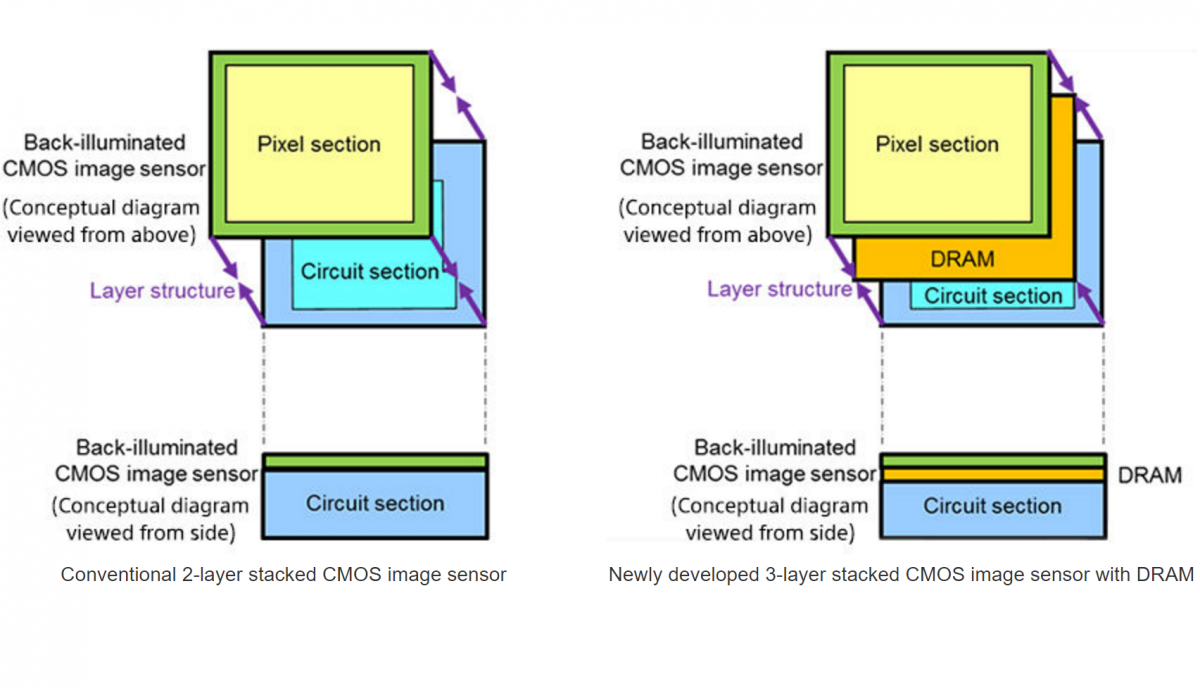Sony's may be struggling to sell as many smartphones as they have in the past, but their image sensors are used in some of the best smartphones available today. Sony established the Sony Semiconductor Solutions Corporation back in 2015 with a focus on its image sensors.
The subsidiary does manufacture additional products but it's the camera sensors that we've come to know as their primary focus since then. They have just announced the industry's first 3-layer stacked CMOS image sensor that comes with DRAM.
Traditional image sensors we see today in smartphones generally consist of two layers, but Sony has found a way to add DRAM in as its third layer. This enables the image sensor to deliver incredibly fast readout speeds which, as a result, allows the camera to capture super slow motion videos with minimal focal plane distortion. The sensor is able to reach these high readout speeds because the circuit that is used to convert the analog video signal from pixels to a digital signal has been doubled from a 2-tier construction to a 4-tier construction.
There's still speed limitations using this method alone, but when Sony added that third layer with DRAM, it can store those signals from image sensors to other LSIs at a much higher rate. This results in the device being able to capture one still image of 19.3 million pixels in only 1/120 of a second (which is about 4x faster when compared to Sony's IMX318 sensor). So devices that utilize this feature of the new CMOS sensor will be able to capture 1080p video at up to 1,000 frames per second.
You can check out a demonstration of this in action from the video above. This video was captured at 960 frames per second but is then played back at 15 frames per second. Previous companies have tried to add more layers to the CMOS image sensor but it has resulted in noise being generated due the sensor having three layers.

